1st LHON INTERNATIONAL FORUM
Editor's Note
Leber's hereditary optic neuropathy (LHON) is a maternal mitochondrial disease with prevalence rate of 1/31,0000. It predominantly affects young adult males aged 14-21 years and leads to acute binocular vision loss or even legal blindness. LHON was first identified by German ophthalmologist Theodor Leber in 1871 and currently affects about 675,000 people worldwide, with about 126,000 potential patients in China. About 90% of LHON is caused by three mitochondrial DNA mutations: G11778A (ND4 gene), G3460A (ND1 gene) and T14484C (ND6 gene). G11778A mutation of ND4 is the largest subtype accounting for about 70%~90% among 3 subtypes above, and its proportion in Asian population is even higher at around 90%. Theses mutations impair the biological respiratory chain function of the cell mitochondria, resulting in reduced ATP production and oxidative stress and cell apoptosis in the optic ganglion cells. At present, there is no effective treatment or cure for LHON.
To encourage academic exchanges of diagnosis and treatment practices in different regions, Neuro-ophthalmology Group of Chinese Ophthalmology Society and Neurophth Therapeutics jointly held the first "LHON International Forum" on December 17, 2022. A number of experts and scholars in neuro-ophthalmology from the United States, the United Kingdom, Argentina, Japan, South Korea, Singapore, Taiwan, Hong Kong and mainland China joined this forum virtually. They had academic exchanges and discussions on the epidemiology, diagnosis and treatment of LHON, as well as the latest progress in gene therapy, and shared real-world cases of the LHON patients treated with NFS-01.
Welcome Speech
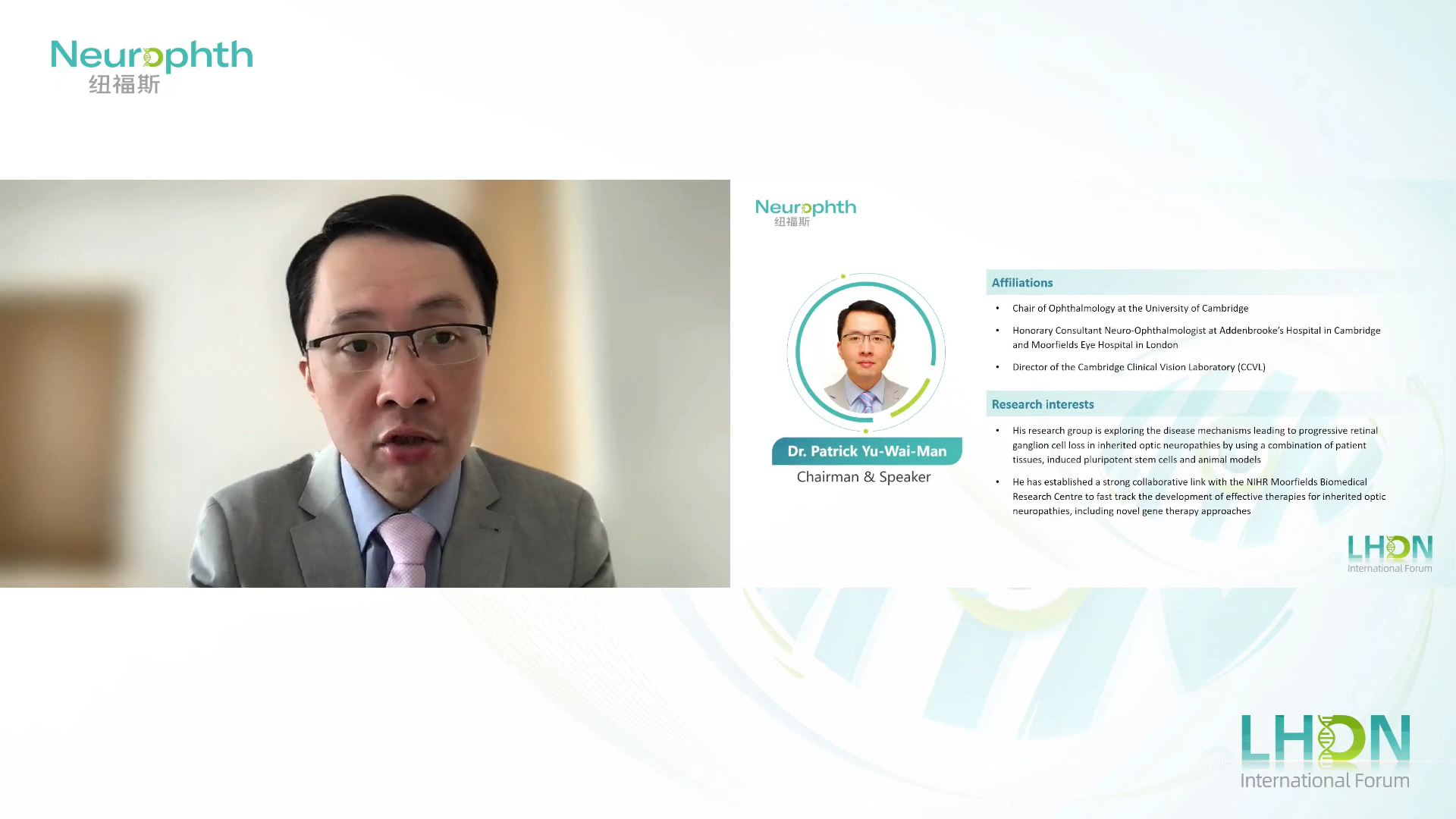
Prof. Patrick Yu-Wai-Man, The University of Cambridge and Moorfields Eye Hospital
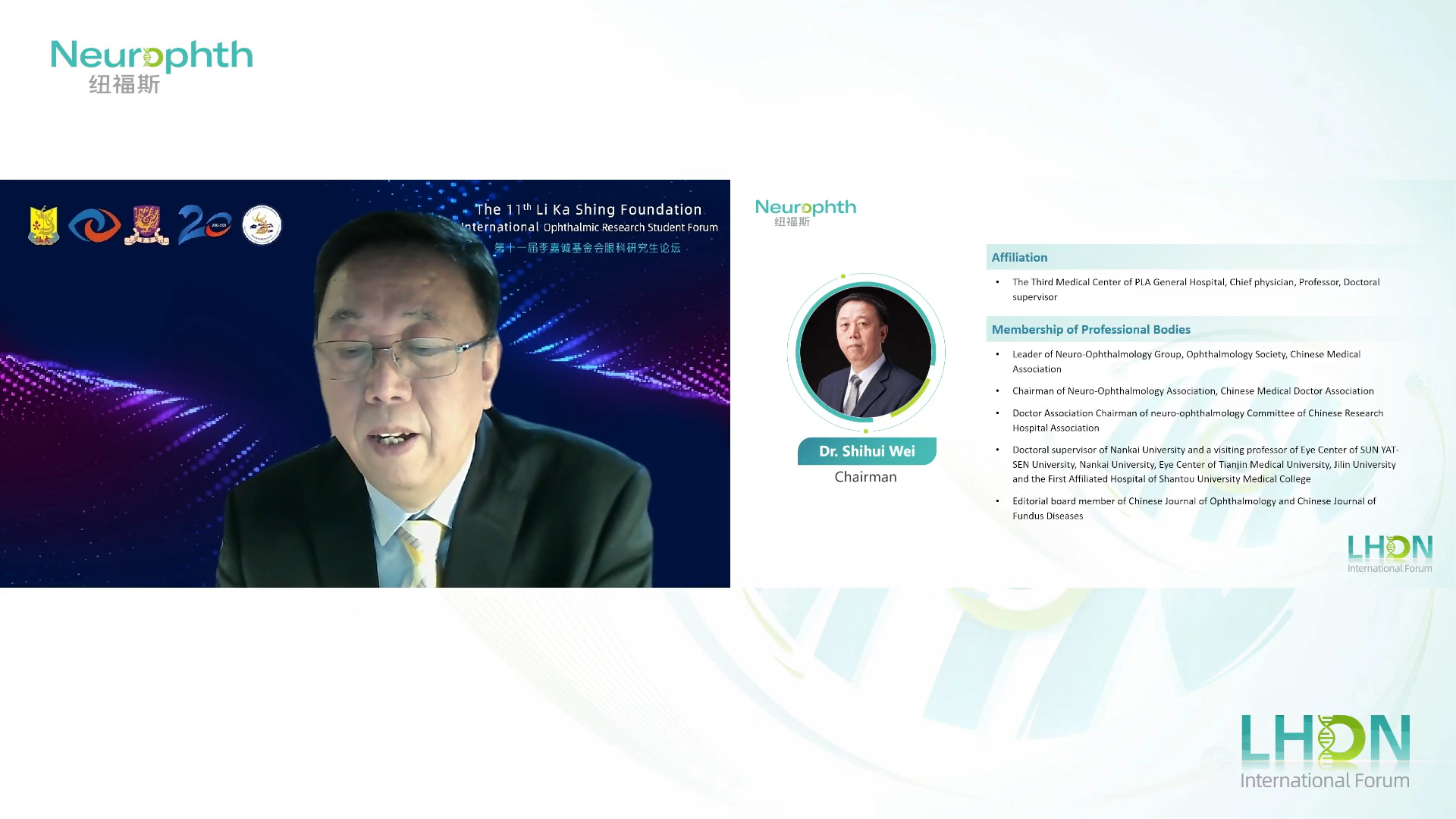
Prof. Shihui Wei, Chinese PLA General Hospital
Prof. Patrick Yu-Wai-Man from the University of Cambridge and Moorfields Eye Hospital and Prof. Shihui Wei from the People's Liberation Army General Hospital were invited to Chair the conference. Prof. Patrick Yu-Wai-Man said “It is my great pleasure to attend the LHON International Forum, which brings together many of my old friends. With invitation of Prof. Wei Shihui and Neurophth Therapeutics, I am honored to be the chairman of this forum with Prof. Wei. All we all know, LHON causes rapid vision loss or even blindness. Clearly, we need to find better treatments for LHON. Now that disruptive treatments are on the horizon, I hope this forum will continue to bring people together to discuss the progress of LHON.” Prof. Wei delivered a welcoming speech on behalf of Neuro-ophthalmology Group of Chinese Ophthalmology Society, and gave a brief background of this forum, which will be held continuously, and more internationally renowned neuro-ophthalmology experts will be invited to cover a wider range of neuro-ophthalmology topics in the future.
Introduction of Neurophth Therapeutics
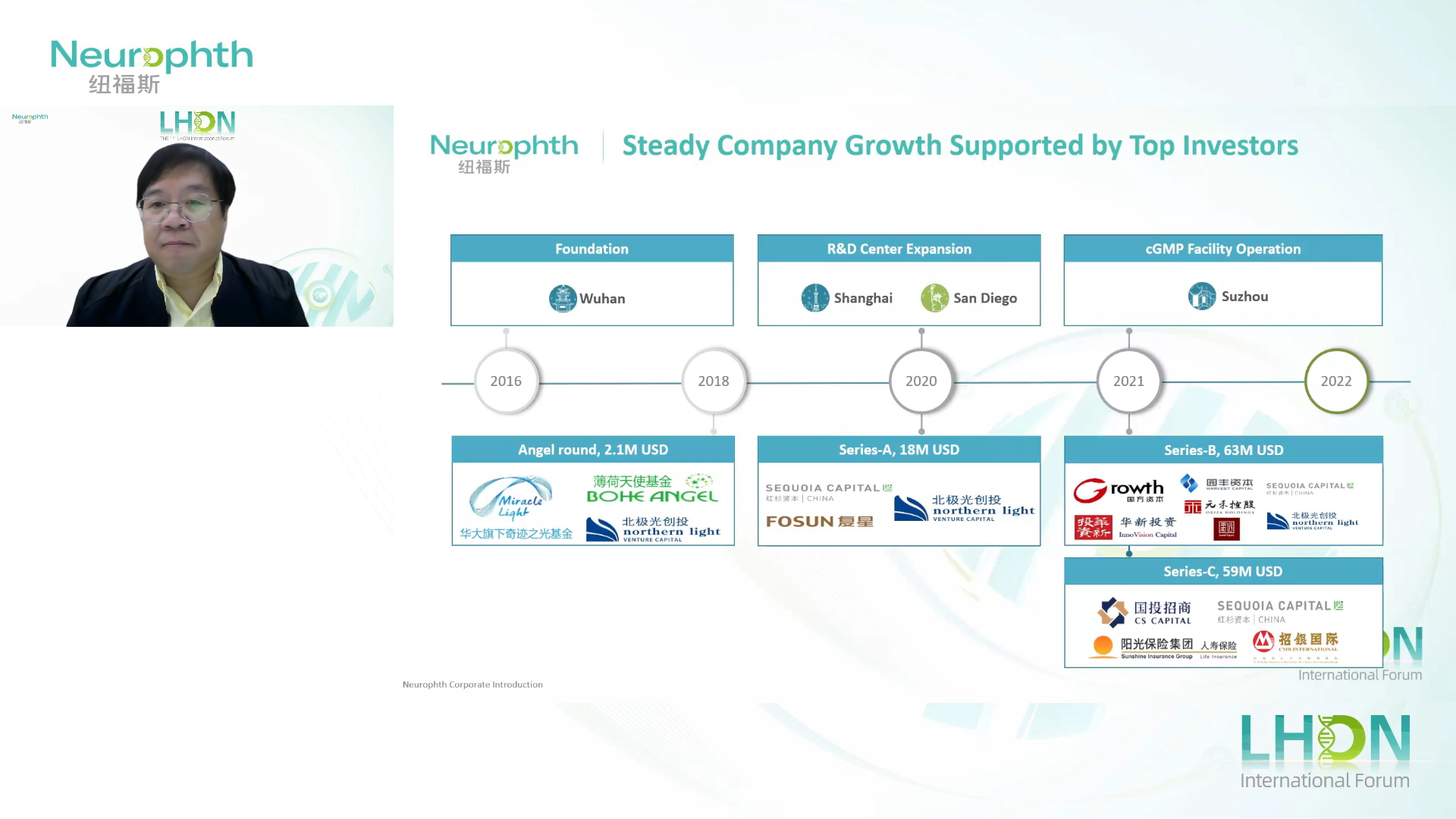
Dr. Xiaoning Guo, CMO of Neurophth Therapeutics
Dr. Guo briefly introduced Neurophth Therapeutics including the history of the company, the management team, the research, clinical and CMC platforms, pipelines and commercialization readiness.
Session 1: LHON-Latest Progress in Research and Clinical Practice
Chaired by:
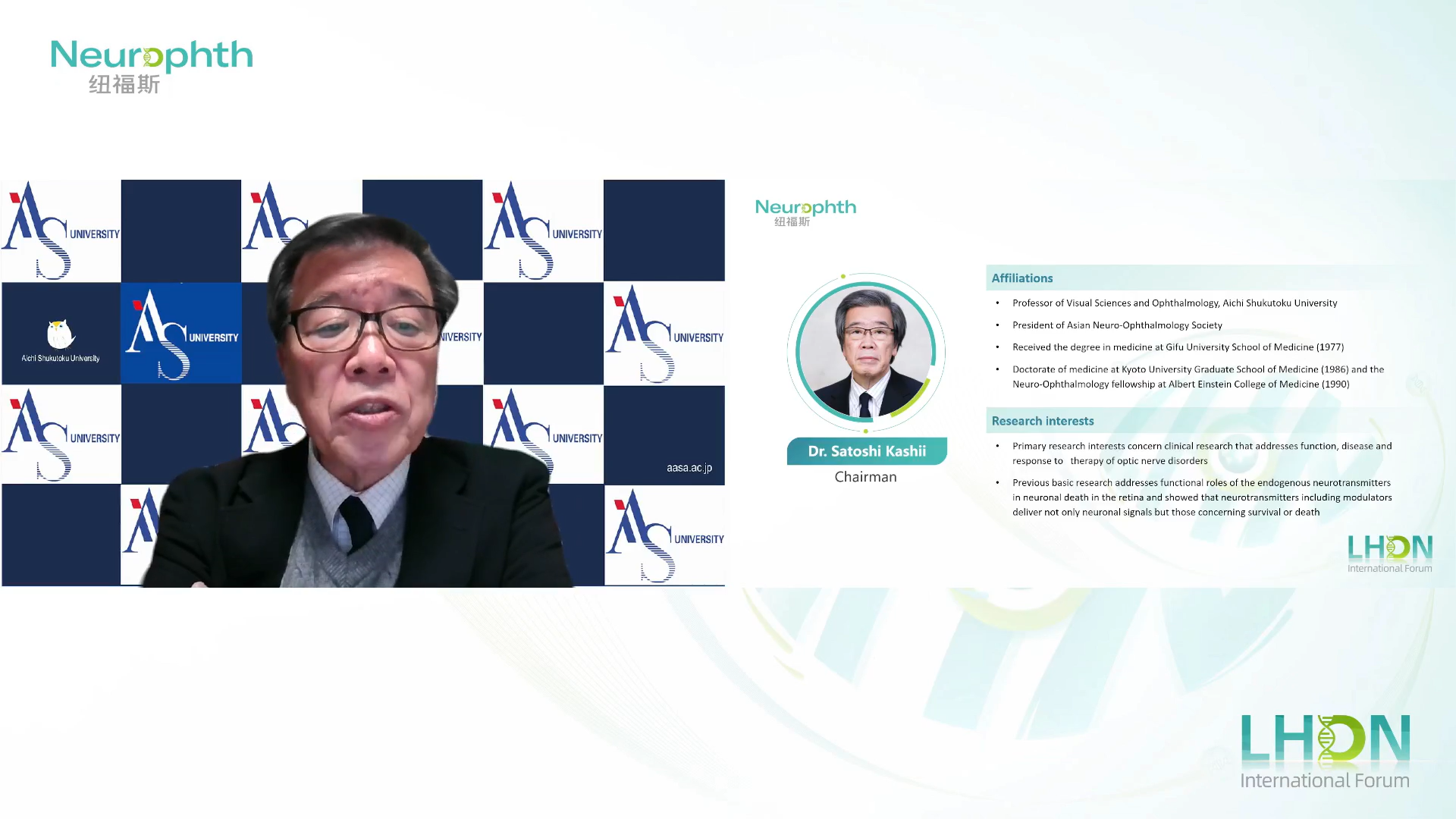
Prof. Satoshi Kashii, Aichi Shukutoku College
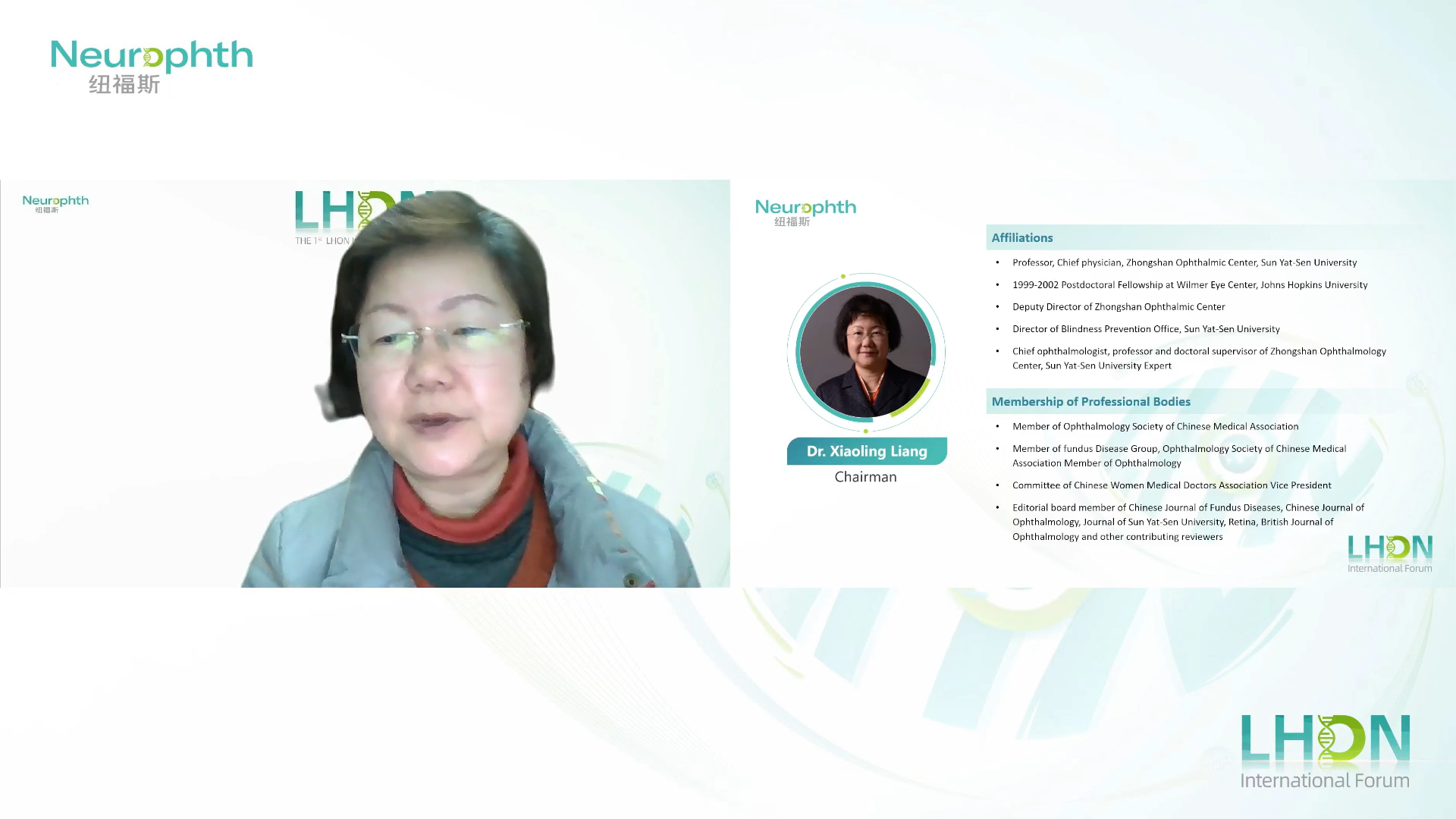
Prof. Xiaoling Liang, Zhongshan Ophthalmic Center, SUN YAT-SEN University
Prof. Kashii, president of the Asian Neuro-Ophthalmology Society and Prof. Liang from the Zhongshan Ophthalmic Center, SUN YAT-SEN University co-chaired the first section. They suggested that it is meaningful to have such a LHON academic communication platform.
Presentation 1
LHON–evolving genetic and therapeutic landscape
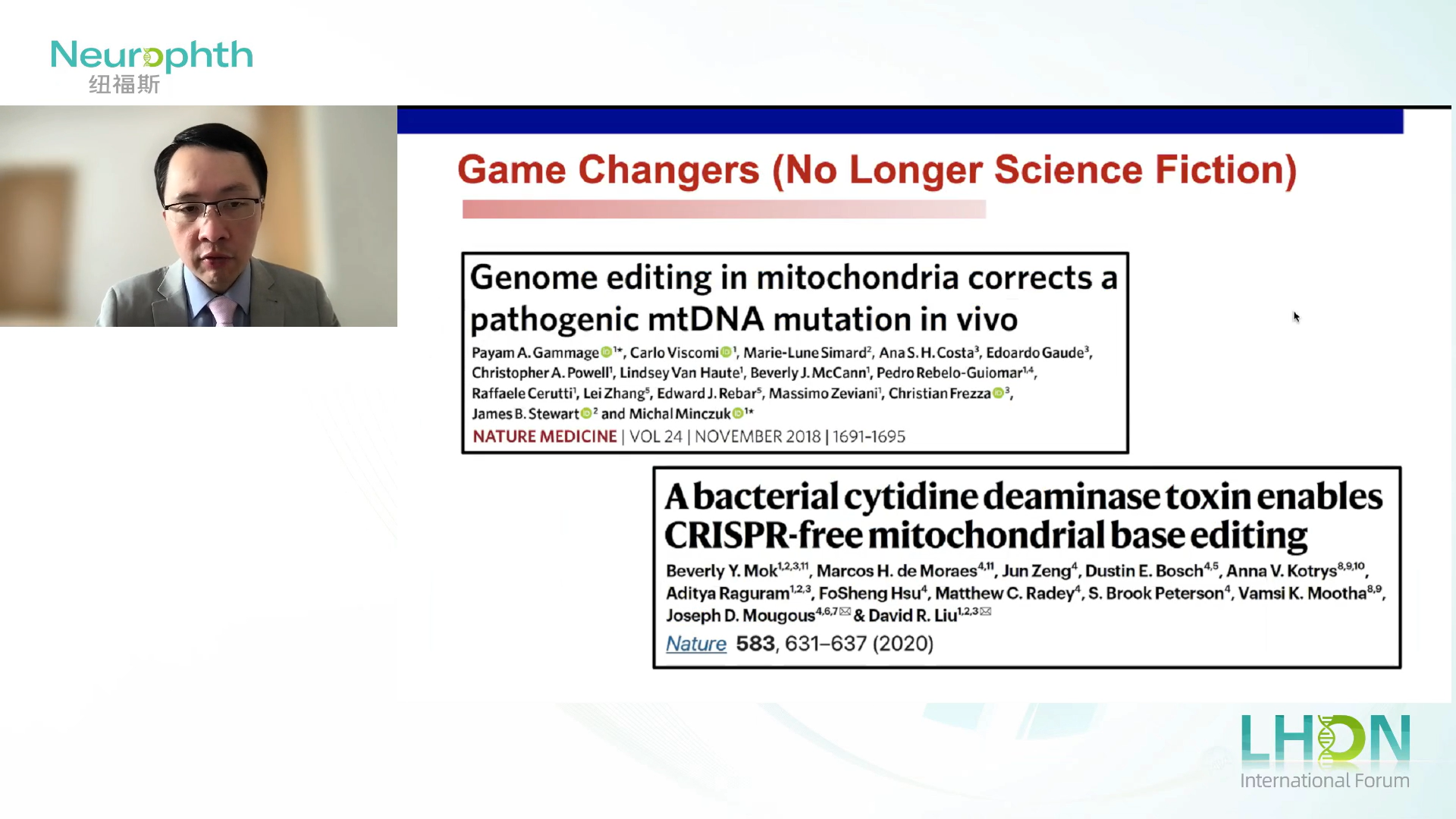 Prof. Patrick Yu-Wai-Man, The University of Cambridge and
Moorfields Eye Hospital
Prof. Patrick Yu-Wai-Man, The University of Cambridge and
Moorfields Eye Hospital
Prof. Yu-Wai-Man is a renowned Neurophthalmologist. He has led global clinical studies of LHON. He systematically introduced the discovery of LHON, major clinical manifestations, visual prognosis, burden of the disease on patients, pathogenesis, major mutations and rare mutation subtypes, as well as the latest progress in drug development and clinical practice.
Presentation 2
Spectrum of the mitochondrial DNA mutations of LHON in Asian
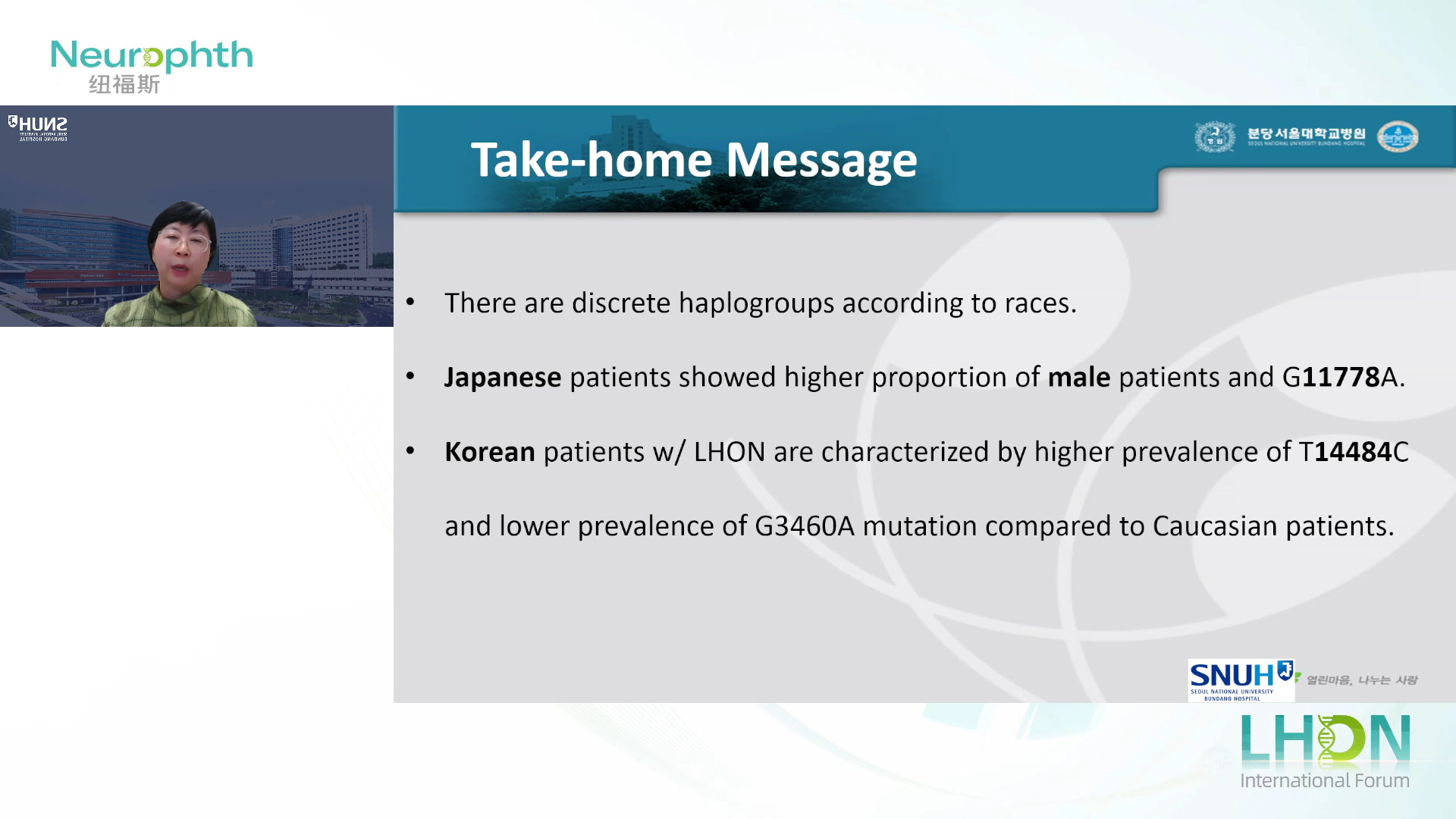 Prof. Jeong-Min Hwang, Seoul National University Hospital
Prof. Jeong-Min Hwang, Seoul National University Hospital
Prof. Hwang is the former president of the Asian Society of Neuro-ophthalmology. She introduced spectrum of the mitochondrial DNA mutations of LHON in Asian: there are discrete haplogroups between races. A higher proportion of males as well as a higher proportion of G11778A are characterized in Japan, while a higher prevalence of T14484C and a lower prevalence of G3460A mutations are characterized und with Caucasian population and the Korean LHON patients.
Presentation 3
LHON epidemiology and treatment status in China
Prof. Xiaoyan Ding, Zhongshan
Ophthalmic Center, SUN YAT-SEN University
Prof. Ding introduced the characterization of LHON in China from epidemiology, diagnosis, rare disease diagnosis and treatment system in China, patient burden, drug accessibility and gene therapy research progress in China. Prof. Ding mentioned that, comparing to other regions, there are relatively more potential patients, more male patients, more G11778A mutation, lower self-recovery rate, lower accessibility of gene test, and more potential patients to benefit from gene therapy in China.
Discussions of Session 1
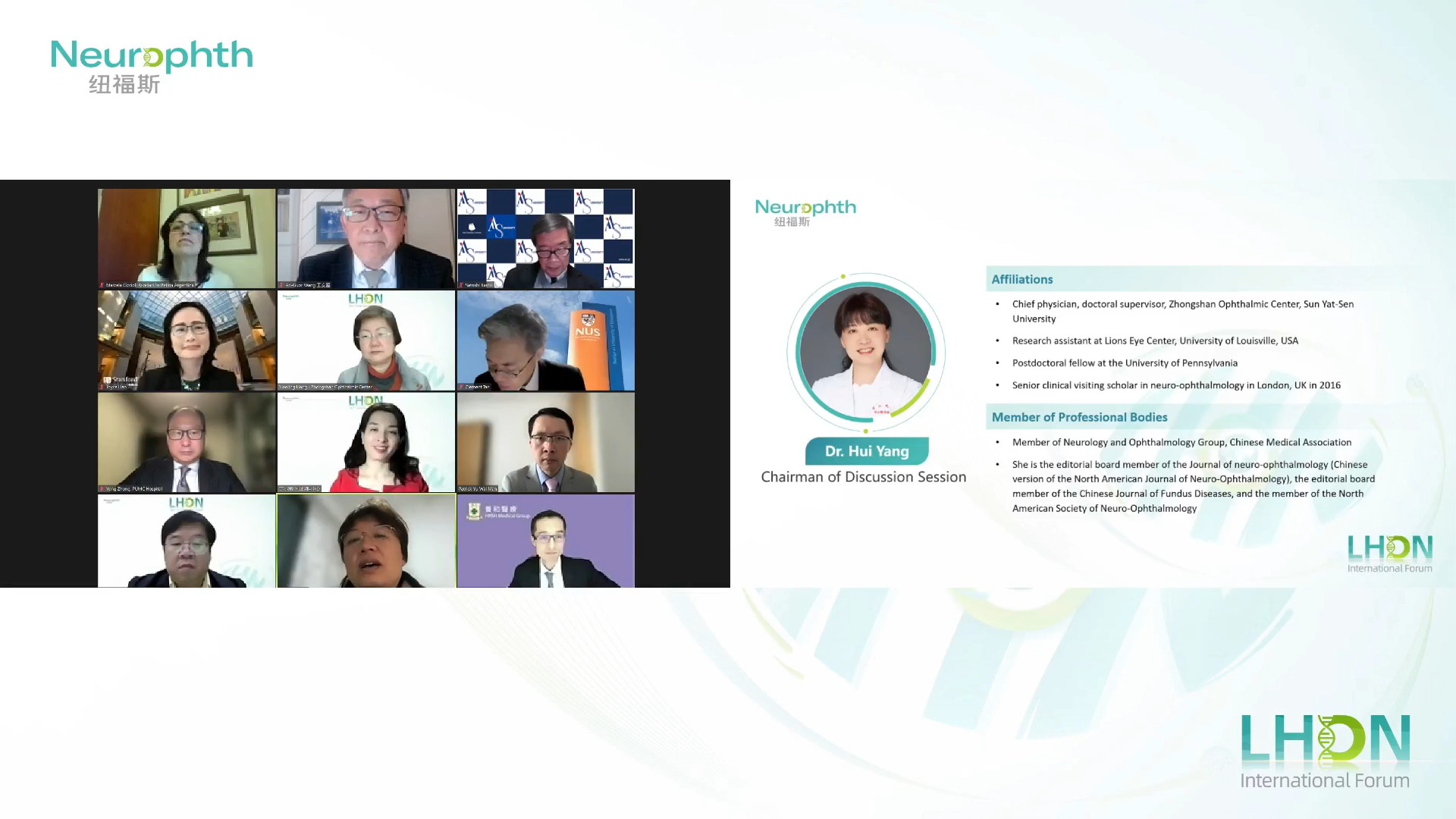
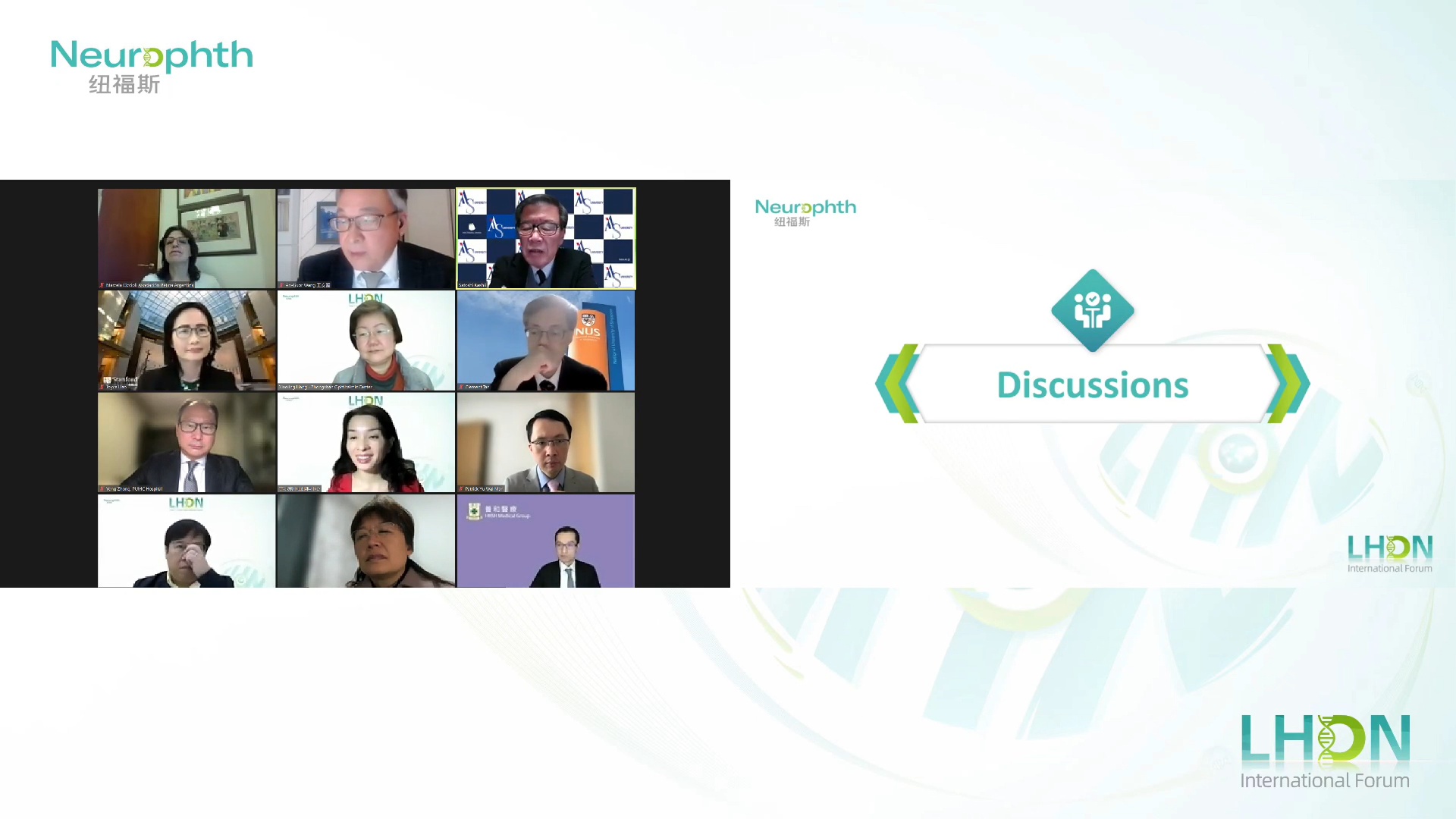
Prof. Hui Yang from Zhongshan Ophthalmic Center, SUN YAT-SEN University and Prof. Clement Tan Woon Teck of National University Hospital, Singapore, moderated the discussion of session 1. Experts expressed their high expectations of gene therapy, and agreed with receiving Idebenone for a year to delay vision loss in the contralateral eye can be used as an interim therapy even though not highly effective
Session 2: LHON-Latest Progress in Clinical Development
Chaired by
Prof. Yaping Joyce Liao, Stanford Byers Eye Institute
 Prof. Yong Zhong, Peking Union
Medical College Hospital
Prof. Yong Zhong, Peking Union
Medical College Hospital
Prof. Yong Zhong and Prof. Yaping Joyce Liao co-chaired the session 2: LHON-Latest Progress in Clinical Development. Prof. Zhong is the Deputy head of the Neuro-ophthalmology Group of Chinese Ophthalmology Society, and Prof. Liao is NFS-01 leading PI in the United States. They pointed out that gene therapy is a new promising therapy for more than 700 inherited rare diseases in ophthalmology and will lead the next academic boom in ophthalmology.
Presentation 1
NFS-01 real world case in South American population
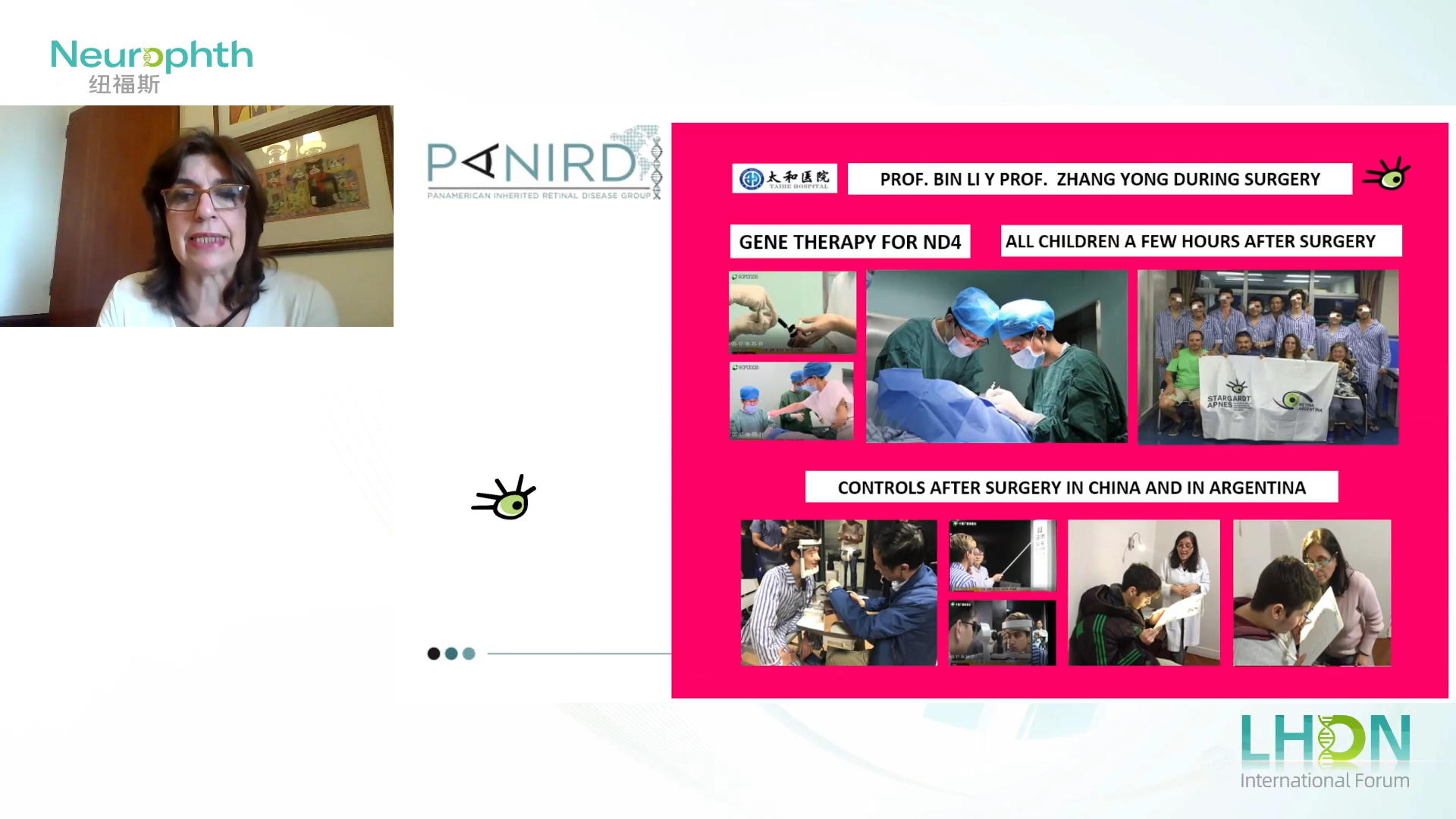 Prof. Marcela Ciccioli, University of Buenos Aires
Prof. Marcela Ciccioli, University of Buenos Aires
Professor Ciccioli, president of the Stargardt APNES Argentina, introduced the real-world cases of 10 LHON patients from Argentina treated by NFS-01 in China when participating II-2. She mentioned that visional recovery of the 10 Argentina patients who have received NFS-01 are very encouraging. After treatment, patients were able to go back to their normal life, some went to colleges, they were able to ride bicycles, play soccer, cooking and even play table tennis etc. . The quality of life of the patients improved remarkably.
Presentation 2
About LHON, what we learned from NFS-01 study
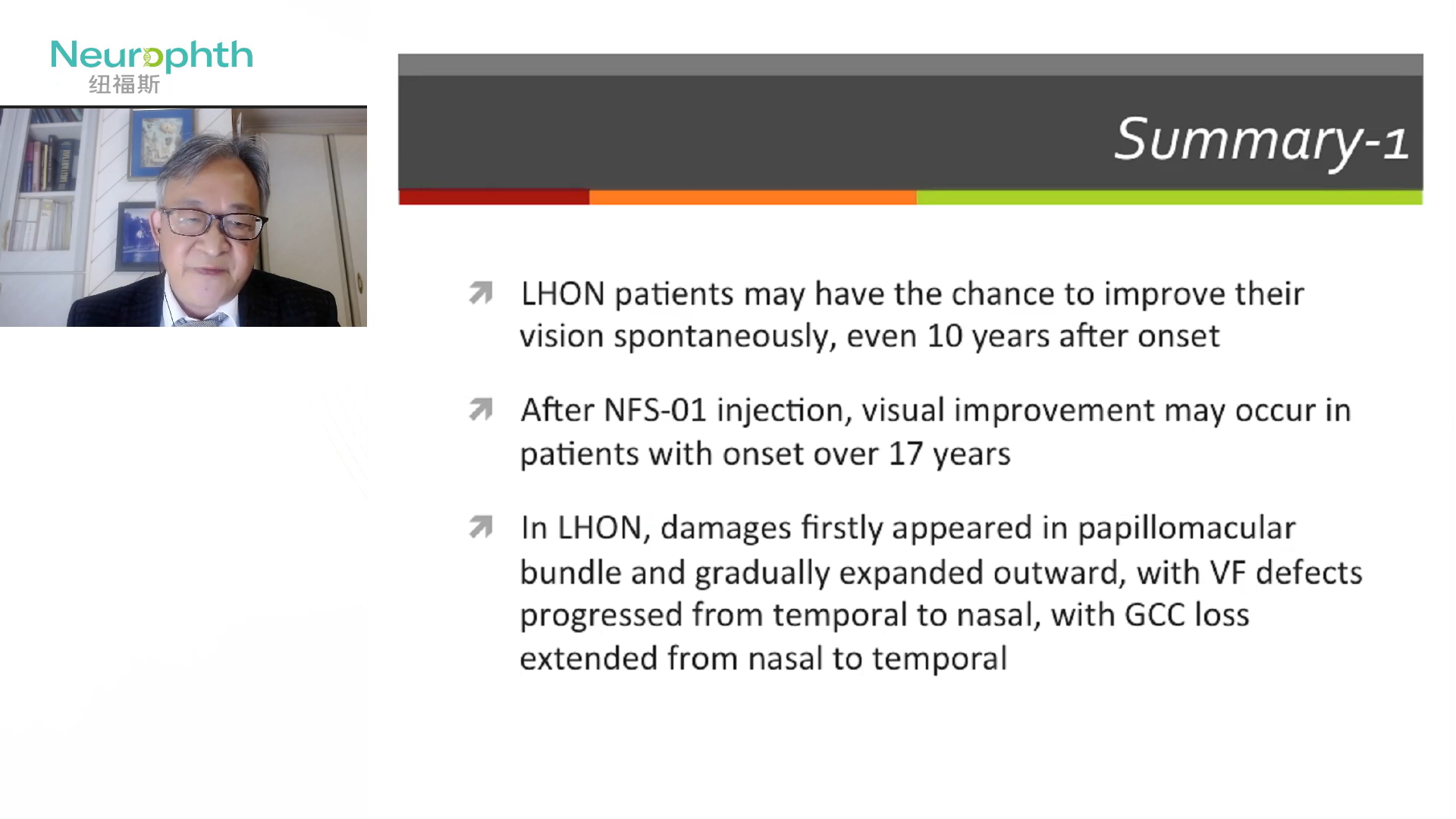 Prof. An-Guor Wang, Taipei Veterans General Hospital
Prof. An-Guor Wang, Taipei Veterans General Hospital
Prof. Wang mentioned that “according to the 3 IIT results of NFS-01, LHON patients have a long treatment window of generally up to 10 years. Individual patients show visual improvement with onset over 17 years with NFS-01 injection. Contralateral Effect observed after the NFS-01 injection, and this effect has also been observed in Bascom Palmer's study and GenSight study, which may be due to vectors movement from treated eye to the nontreated eye via the optic nerve and optic chiasm.
Presentation 3
NFS-01 China registration clinical studies
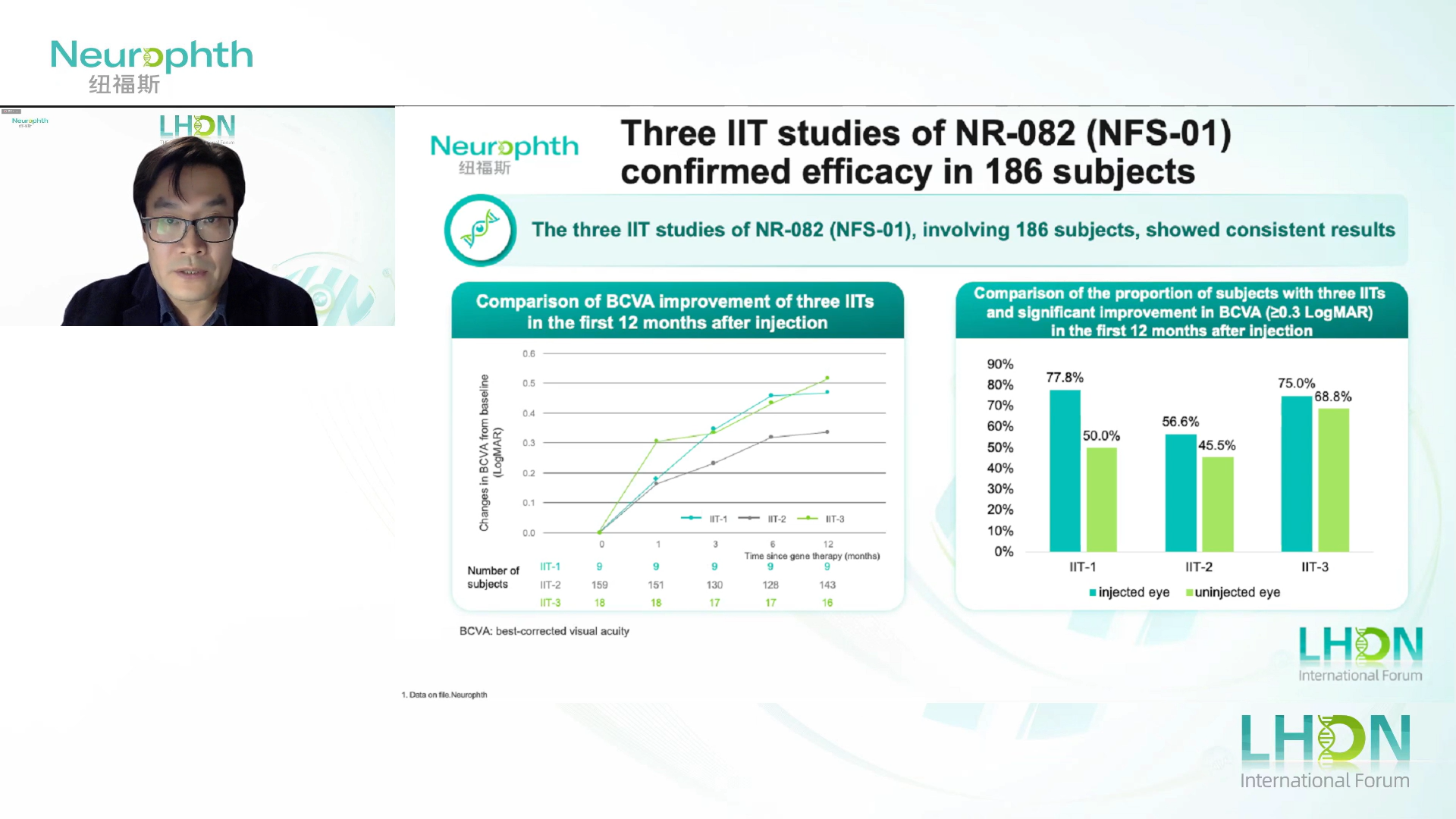 Prof. Libin Jiang, Beijing Tongren Hospital, Capital Medical
University
Prof. Libin Jiang, Beijing Tongren Hospital, Capital Medical
University
Beijing Tongren Hospital is the leading site of NFS-01 registration study (the first registered ophthalmic gene therapy drug in China). Professor Jiang is the Sub PI of the project. He presented the clinical design and some of the key findings in the 3 IITs and the ongoing PhI/II of NFS-01. He mentioned that according to the current clinical results, NFS-01 is effective and safe. The BCVA of patients were significantly improved, and the overall safety profile is good without serious adverse events. NFS-01 is expected to be a safe and effective treatment for LHON.
Discussions of Session 2
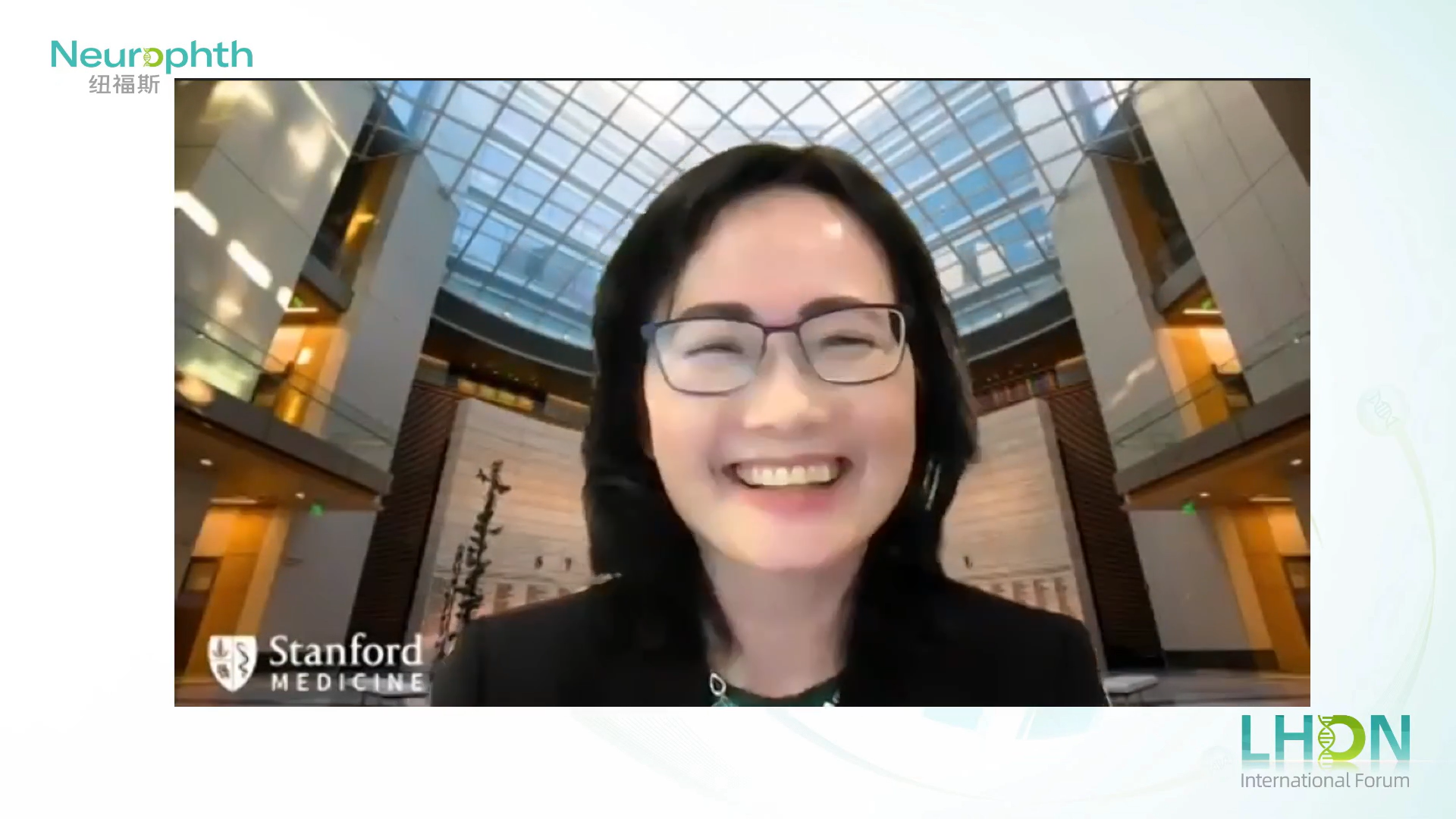
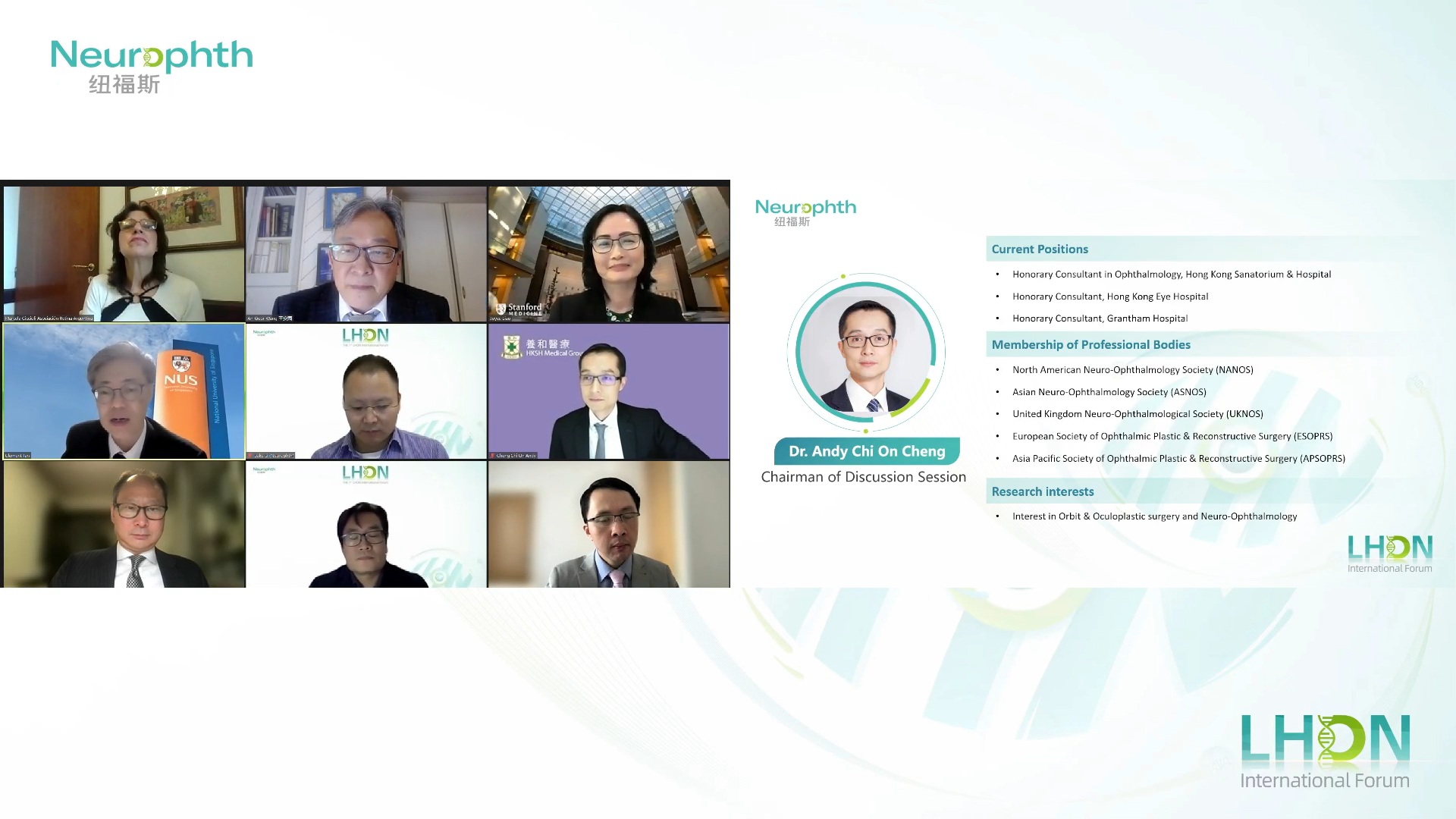
Prof. Xiaoyan Ding from the Zhongshan Ophthalmic Center, SUN YAT-SEN University and Prof. Chi On Andy Cheng from the Hong Kong Sanatorium & Hospital moderated the discussion of session 2. The experts had an in-depth discussion on the time window selection of LHON gene therapy and expressed high interest on the long-term visual benefit for patients from gene therapy.
Summary
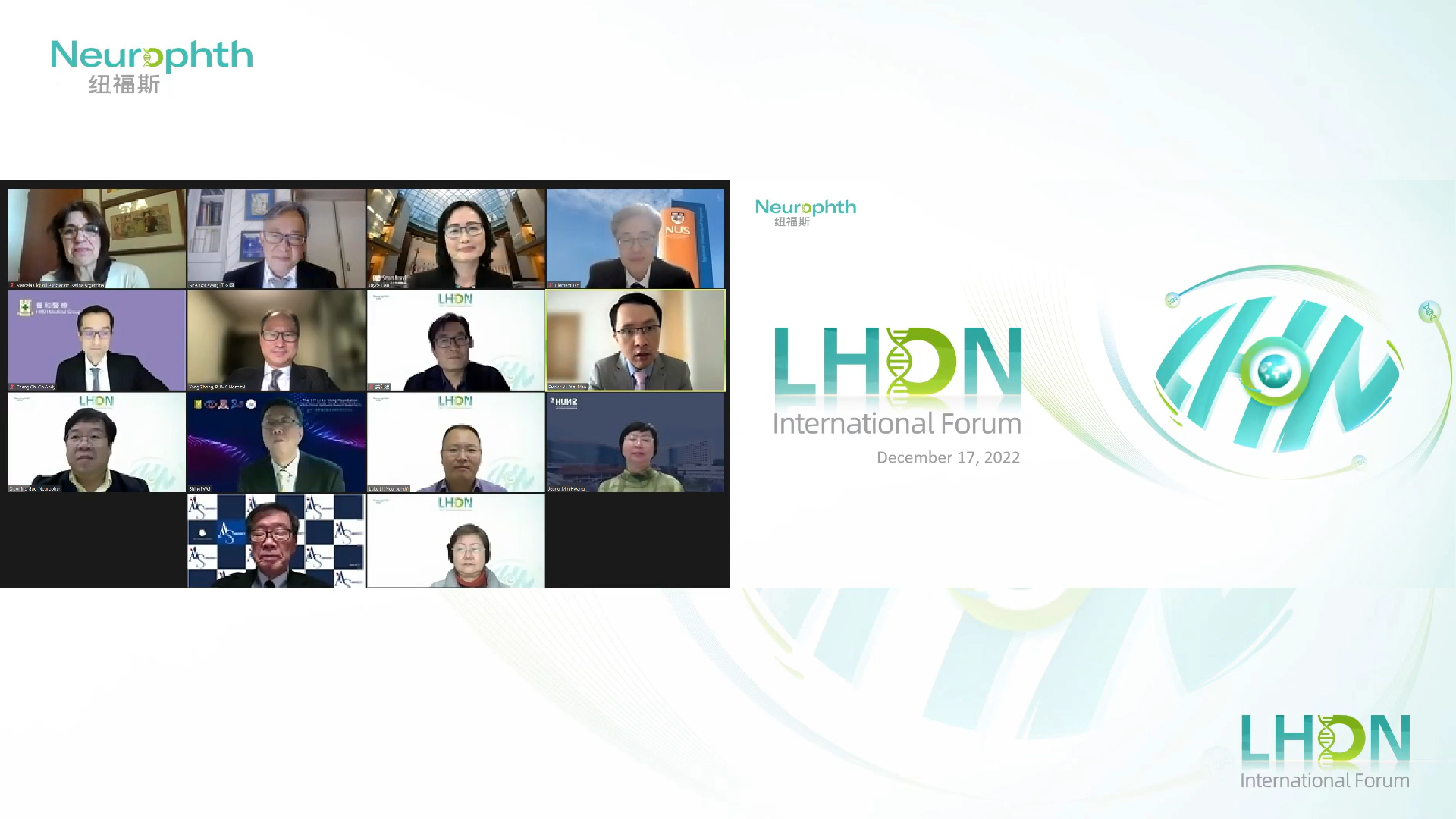
As closure, the experts gave very positive feedback on this forum as a scientific platform to encourage communications and sharing for Neurophthalmologists across the world. They also expressed their expectations for more evidence from the ongoing studies can be shared in the future and more gene therapy programs can be developed for the IRDs that can be covered in the future forums.
